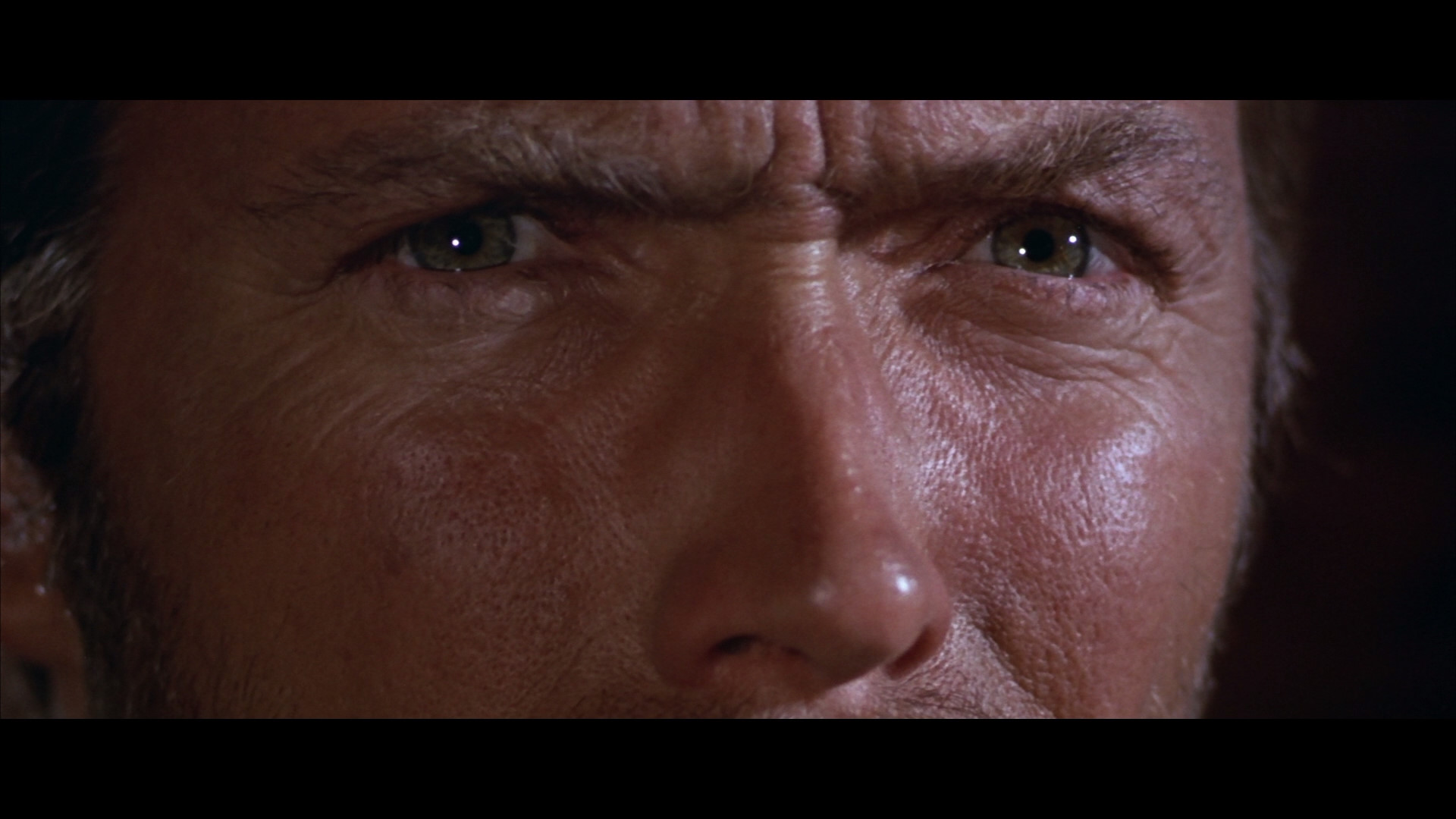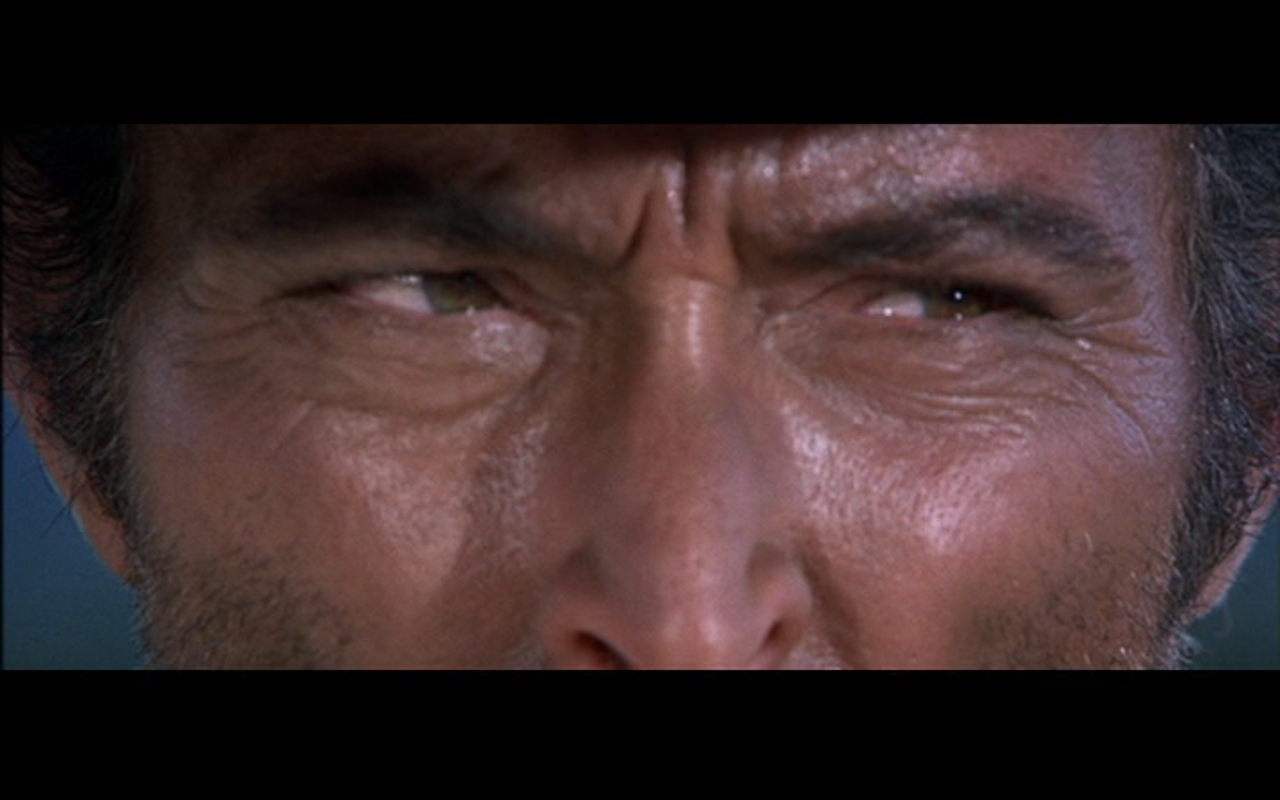The classical period
 |
| John Ford's Stagecoach, 1939. |
This period covers everything from The Great Train Robbery up to the late 50s. The former was a 1903 film short at a time when fiction about "the Old West" was still a popular pastime in the US. Many of the standout figures of that era, such as Wyatt Earp and Bat Masterson, were still alive at the time and the fictionalization of their various careers had long been established, something touched upon by Eastwood in his Unforgiven, when Little Bill confronts English Bob's biographer about the facts behind the case of The Duke (Duck) of Death.
The mythology of the "Old West" was one based on the hard life that was presented by the frontier, as opposed to the more civilized environs of the East Coast and the original colonies and their urban areas. On the frontier, you had no organized government and lesser respect for the laws that it defended. Furthermore, you had greater threats in terms of exposure, wildlife, and what was presented as the almost-ubiquitous threat of the "savage" Amerindian peoples. Combine all of that with the lack of resources or personal infrastructure of many of the settlers and you had that "harder life" which naturally trends toward stories of great adventure (cue Joseph Campbell's "hero's journey".) The authors of what would later be known as "pulp fiction" were happy to emboss the actually often-mundane realities and gloss over the occasionally sordid details.
This was a tradition that directors like John Ford and Howard Hawks were glad to carry on, whether because it was a personal outlook on concepts like the American/white man's destiny or because they, like the pulp writers, knew what would sell if properly presented (often in that "destiny" vein.) As times moved on in the 20th century, the glorification of the Western frontier, now long past, was also a method of confirming the heroic status of American culture for directors, actors, and audiences. The fact that the frontier life was easily slotted into simplistic moral and ethical scenarios that called for blunt, black-or-white decisions tended to reinforce two things: the concept of frontier people as "heroic" because of their easy acceptance of the way things were (akin to Robert E. Howard's assertion that barbarian ethics, like those of his famous Conan, were superior to civilized corruption); and the anti-intellectualism of those same heroic individuals. Those people didn't need to stop to consider the ramifications of their racial, ethical, or environmental decisions. They were acting that way because the frontier demanded it and, if one wanted to survive on the frontier, then this is how things were handled, especially if you were the "good guy".
As the century progressed and the frontier receded into the historical horizon ("Don't go, Shane!") and began to be overtaken by the possibility of a new frontier overhead, the Western began a transition from the relatively obvious moral decisions of John Ford characters to situations where it became difficult to tell the "white hats" from the "black hats", even using those frontier ethics. In fact, it became easier to associate everyone with "gray hats", especially because that made them... you know... human. It started with a film called Vera Cruz,
Vera Cruz is set during the Franco-Mexican "intervention" and was notable for its rampant cynicism and casual attitude toward violence, which was fairly startling for a movie in 1954. It's considered an inspiration for many later films, including those of Sergio Leone, who is the key player in the real change in Westerns in the 60s. Another contributor to this trend was Warlock.
Warlock presented a situation where the most prominent actor, Henry Fonda, wasn't either the hero or the villain, but more of an "anti-hero". He was still a lawbreaker and was opposed by the genuine "good guy" of Widmark, but it was clear that his intentions were at least nominally good the whole time. This character, more than any other, was predictive of Eastwood's Man with No Name.
The spaghetti period
Sergio Leone wanted to do Westerns, but he wanted to do them with a more realistic bent, reflecting the questioning of society's underpinnings that was occurring throughout modern culture during the 1960s. In a curious twist, he and other directors of the time were deeply inspired by Akira Kurosawa, Japan's most famous cinematic auteur who had begun a series of samurai films inspired largely by Shakespeare and... John Ford Westerns! Indeed, John Sturges' The Magnificent Seven was a remake of Kurosawa's Seven Samurai and Leone's A Fistful of Dollars so closely aped Kurosawa's Yojimbo that the latter's producers sued and won damages. Kurosawa's films are notable for many things, but one of the most prominent is the often difficult ethical situations faced by his characters who are frequently having to combat personal mores, as well as those of society. His most memorable characters(in addition to being Toshiro Mifune) are typically loners because of their need to be external to society's strictures in order to be confronted with these situations in the first place. Enter: Clint Eastwood.
A Fistful of Dollars introduced the first truly prominent anti-hero to the American Western genre. Eastwood's character, known as "Joe" (the press would soon tag the Leone/Eastwood trilogy of films as "The Man with No Name" series, even though his character had a name in all three films) seems to be acting in the general direction of "good" but makes it clear that he's most interested in the money and the outcome for the public weal is incidental... except when Marianne Koch as Marisol asks him why he was helping and he makes a reference to his past and a woman he'd once known. So, resolving personal issues or actually doing the "right thing"? That's left to the audience to determine, which is exactly as it should be.
Leone and Eastwood continued their association with For a Few Dollars More and, finally, one of the finest films ever made: The Good, The Bad, and The Ugly.
The Western genre would be changed forever with that trio of films released from 1964 to 1966, but it would take American audiences (and directors) a while to catch on. Other than Leone's brilliant Once Upon a Time in the West, the genre really wouldn't have any significant releases until Eastwood began making his own films in the mid-70s and those drew significantly from an altered assessment of the time period, as well as Leone's genre-shifting work.
The pasta-modern period
Society had moved on from the idea of simplistic heroes and villains. After the turmoil presented by the Vietnam War and Watergate, the presence of a character like the Man with No Name (or the Outlaw Josey Wales) seemed almost a given. Certainly, there were films that attempted to stay within the confines of the Ford/Hawks template and there were homages to that approach, like Lawrence Kasdan's Silverado (which everyone should see, if only for John Cleese's performance as a local sheriff: "As you may have noticed, I am not from these parts.") but most took the more cynical approach of the American public and Leone's take on the genre and began to view it in a seemingly post-modern, constructivist perspective. Not least among these was Eastwood himself, who directly questioned the myth-making of the period with his Unforgiven:
But other fine examples abound, especially those that lifted the genre away from its formerly perpetual obsession with the "unrepentant savages that threatened the frontier way of life", like Dances with Wolves and Geronimo. They appeared alongside films that continued to question the myths surrounding key figures of the period (Wyatt Earp, Tombstone) and remakes that presented their earlier plots in a more intricate skein of people, agendas, and changing times, like the recent 3:10 to Yuma:
In many ways, the modern Western is similar to what the modern gangster movie has become post-Godfather and post-Sopranos: conscious of history and self-aware of the modern perspective that now arches an eyebrow at much of that history. At some point in the future, I'll probably delve back into the Leone/Eastwood trilogy, as those films still carry the most weight for me in the genre as a whole (despite my appreciation for direction and performances, I am not much of an Unforgiven fan, for example.) And, of course, one of these days I should do a post about Kurosawa. And, speaking of Japanese films, watching Godzilla on the 4 O'clock Movie, back in the day...






Very interesting read, Jack/Mark. Thanks. -- I think I may go watch another Western right now.
ReplyDeleteYou might be interested in the westerns directed by Budd Boetticher and written by Burt Kennedy.
The Tall T (1957), Buchanan Rides Alone (1958), Ride Lonesome (1959), and Comanche Station (1960).
http://hcl.harvard.edu/hfa/films/2005winter/boetticher.html
Jim Kitses writes:
The moral of Boetticher’s films is thus a simple one: everyone loses. Life defeats charm, innocence is blasted. The world is finally a sad and funny place, life a tough, amusing game, which can never be won but must be played. If Boetticher’s films can darken to near-tragedy, the pessimism is always held in check by an innate response to the absurdity of it all, the way in which we are forced to take up roles in a farce. It is this comic awareness in Boetticher that is behind what appears a natural classicism.
http://sensesofcinema.com/2001/festival-reports/biff_boetticher/
Glad you enjoyed it. Thanks. I remember reading about Boetticher's films but the only one I've ever seen is the first half of The Tall T. I don't remember why I stopped watching, but I'll be sure to take another look now.
ReplyDelete